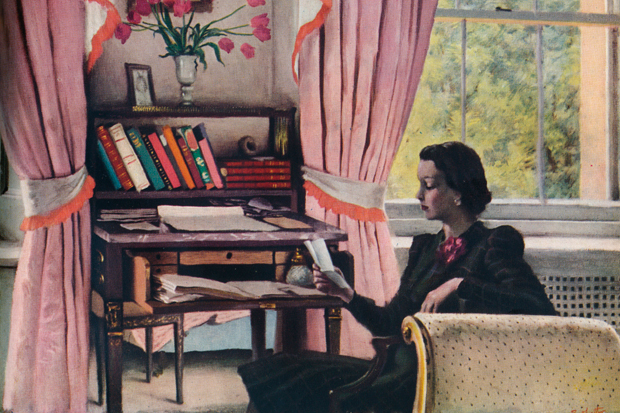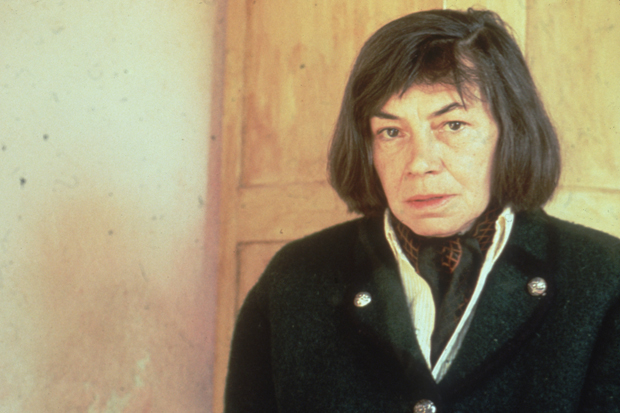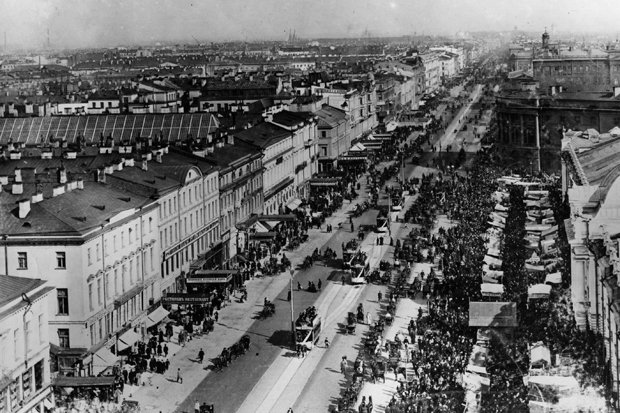Contrary to popular myth, the exuberant flame of life in the English country house was not extinguished by tears at the end of the Great War. And in his deliciously jaunty and wonderfully knowledgeable book, Adrian Tinniswood, social historian and country house authority, also upturns the story that huge numbers of Britain’s loveliest houses disappeared in the 1920s and 1930s, either through lack of heirs, despair, neglect or the stranglehold of taxation. He describes how instead, with ‘new aesthetics and new social structures’, the clubby, elitist, joyful prewar way of life adapted and became even more vibrant after the Armistice.
In part, the yearning for a sense of rootedness had become more urgent than ever. ‘The country house was a home, and more — something woven into the fabric of society,’ Tinniswood explains. When flesh and blood had proved so fragile, bricks, mortar and heraldic cornices offered ‘a symbol of continuity which held out the hope of a return to normality after the slaughter’. In a series of super-generously illustrated chapters Tinniswood displays a terrific insider’s grasp of gossip, while cramming his text with the stories of sport, sex, food, royalty, design, ruination and joy that defined these mansions.
During the interwar period of ‘gentle decline’ — ‘the long weekend’ — it is certainly true that several of Britain’s most splendid manor houses, their owners taxed beyond their means, were lost forever. Sutton Scarsdale, the grandest Georgian house in Derbyshire, sunk roofless to the ground. Others were demolished, or taken down beam by beam, like the glorious timber-framed Lymore Hall near Montgomery. The building had become so precarious that during a church fête the Earl of Powis, accompanied by 20 parishioners, suddenly plunged through the rotting floorboards of the Great Hall into the cellar below. Having found no takers for his offer to rent out the place at just £1 a year, Lymore’s distraught Earl could not face attending the auction at which his house was bodily stripped of all its finery. It felt like a family funeral. A few miles away the huge bonfire that consumed the unsaleable but lovely Palladian-inspired 19th-century Nuthall Temple made ‘a wonderful sight’, the local paper reported. Valuable staircases and embellished mantel-pieces were packed off to the United States like overdressed spare limbs to enhance, and lend history to, American homesteads such as that of the press baron William Hearst. But despite the losses, hundreds of houses survived.
Many of the original owners considered electricity vulgar, were united in their reluctance to ‘allow the 20th century into the house’ and appalled by the disruption involved in modernising their gorgeous interiors. One owner preserved his precious 18th-century stucco work by setting a ferret under one end of the ballroom floor and a dead rabbit at the other. The ferret’s journey around the ancient joists indicated the most effective unseen route for the ugly new wires. By refusing to install central heating at Woburn, the 11th Duke of Bedford forced his 50 indoor servants to keep his home fires burning in some six dozen fireplaces, while candles were still placed in the bedrooms for sealing letters.
The royal family, of course, occupied the top rung of the aristocratic property ladder. Accompanied by a vast mobile staff, chauffeurs replacing grooms, they moved in cars, trains and yachts around their strategically positioned castles and palaces in London, Windsor and Scotland according to the demands of the social and sporting season (no change now). York Cottage on the Sandringham estate was the anomaly: a ‘glum little villa’ with a pond on which ‘a leaden pelican gazed in dejection’. It was inhabited by George V as his widowed mother Queen Alexandra refused to move out of the big house — itself an unsatisfying ‘jumble of turrets, gable and pediments’.
Friends of Queen Mary must have groaned on receiving the instructions that preceded her arrival for a weekend visit, including accommodation for nine servants and the stipulation that fresh barley water be placed in her room at two-hourly intervals. The nobility also travelled in style, Sir Albert Richardson’s Rolls-Royce stocked with grapes, nuts, sardines and silver flasks of brandy, as though famine might strike its occupants between Bond Street and Bedfordshire.
The country house represented ‘a still point at the centre of a maelstrom of cultural and social change’. While divorce rates rose and houses that had belonged to Depression-blighted families for centuries slipped through their fingers, the newly rich and the Americans made the most of the thriving real-estate market. A remarkable number of tempting properties suddenly boasted visits by Elizabeth I, with records dating back to the Norman Conquest: history in exchange for a cheque. Waldorf Astor bought Hever in Kent, Hearst acquired Donats in Wales and Lord Curzon and his American department-store-heiress wife became the owners of Bodiam in Sussex.
The new fashion in building was not always greeted with quite the same thrill as modernism in painting, literature or music. Tinniswood argues that Lutyens, the pre-eminent architect, was really an Edwardian, whose loveliest postwar work was not in houses but gardens (including the design of a particularly enduring garden bench). Meanwhile his successors indulged the new passion for fresh air, and for bringing the outdoors in through huge windows, although the British weather did not always fit the fad for glorious swimming pools, such as those at the Prince of Wales’s romantic Fort Belvedere and Philip Sassoon’s artistic extravaganza, Port Lympne. The doyenne of aristocratic decorators, Sybil Colefax, knew ‘everyone’. It was said that whenever conversation turned to Jesus Christ, she could not resist divulging her precise position beside the manger.
During those long weekends (the term itself a vulgarism only considered acceptable after the Great War) behind beautifully carved front doors half-kept secrets abounded and political and sexual alliances flourished. Increasingly grey-haired servants remained loyal for decades. while newer, handsome employees found themselves propositioned by the guests. Households gay in mood and inclination allowed homosexuality to be hidden from incriminating laws, while an early, undeclared version of the corporate away-day for government ministers occupied weekends at Cliveden, the Astors’ place, and at Chartwell, Winston Churchill’s home in Kent.
Tinniswood’s meticulous, irresistible story culminates in the summer of 1939, with a flamboyant firework burst, as Blenheim held a garden fête, Chatsworth a 21st-birthday ball and Welbeck a golden wedding celebration. As war approached the great houses were turned into schools and hospitals, doing their bit for the nation and perhaps easing the pain of endings as suitcases were packed for the last time.
Got something to add? Join the discussion and comment below.
Get 10 issues for just $10
Subscribe to The Spectator Australia today for the next 10 magazine issues, plus full online access, for just $10.
Juliet Nicolson is the author of Just Before the Storm and The Great Silence: Britain from the Shadow of the First World War to the Dawn of the Jazz Age.
You might disagree with half of it, but you’ll enjoy reading all of it. Try your first month for free, then just $2 a week for the remainder of your first year.














Comments
Don't miss out
Join the conversation with other Spectator Australia readers. Subscribe to leave a comment.
SUBSCRIBEAlready a subscriber? Log in